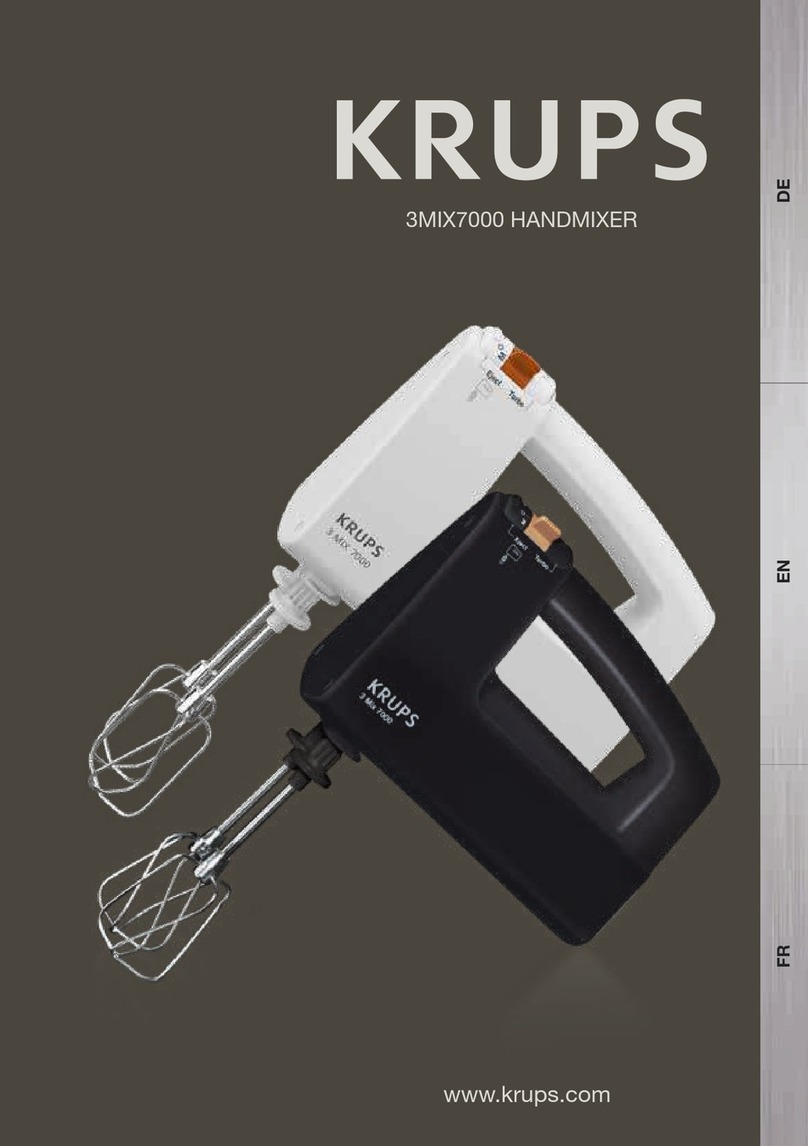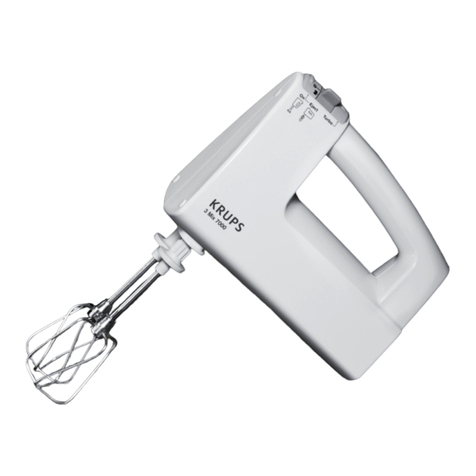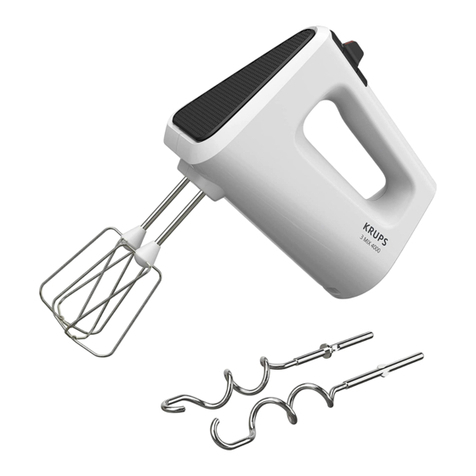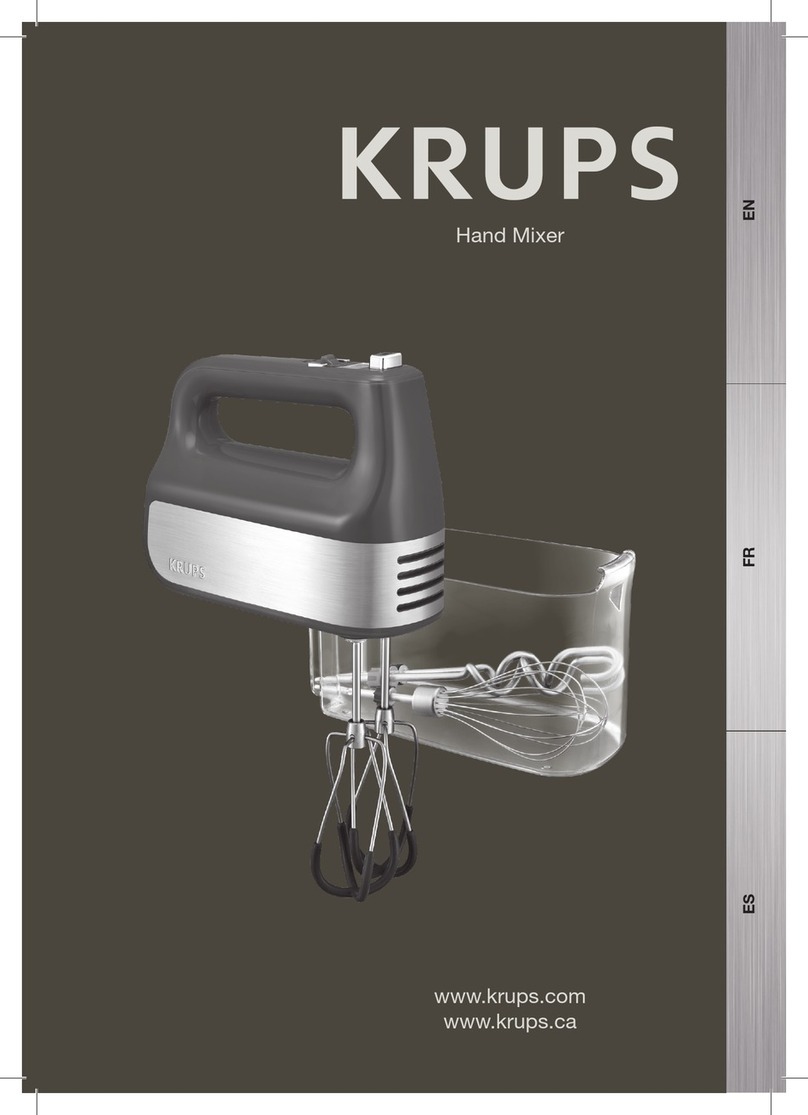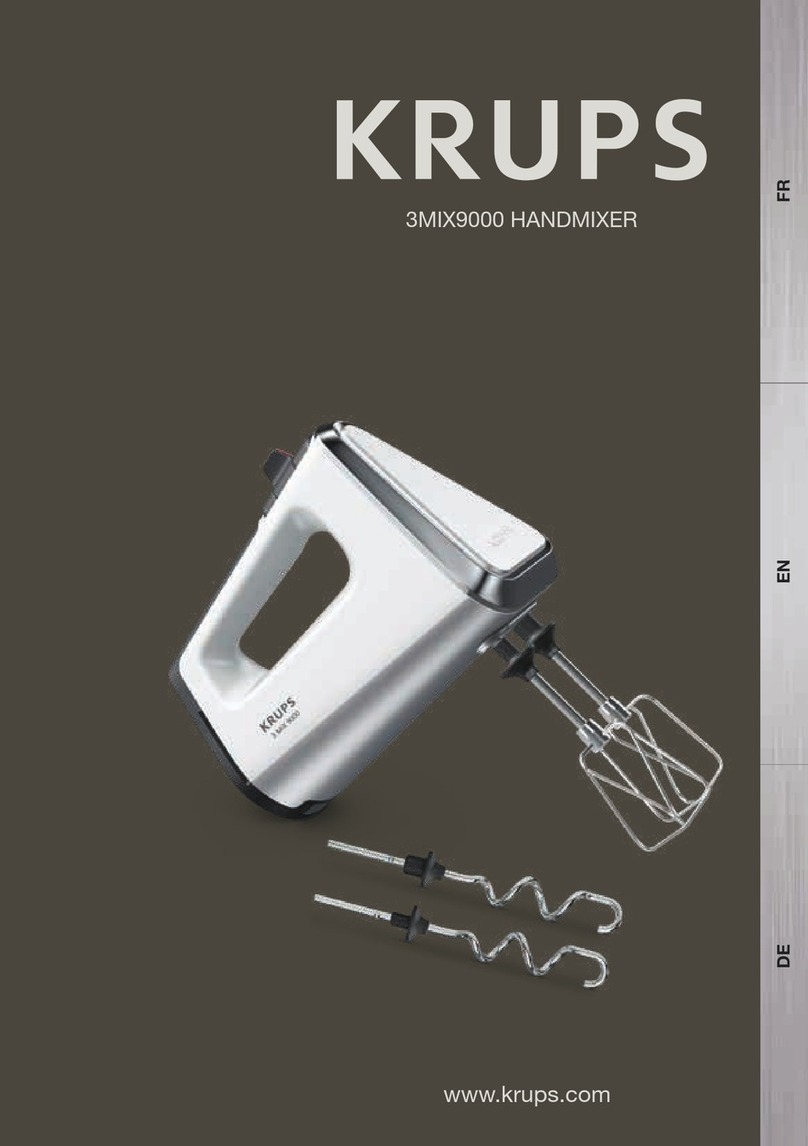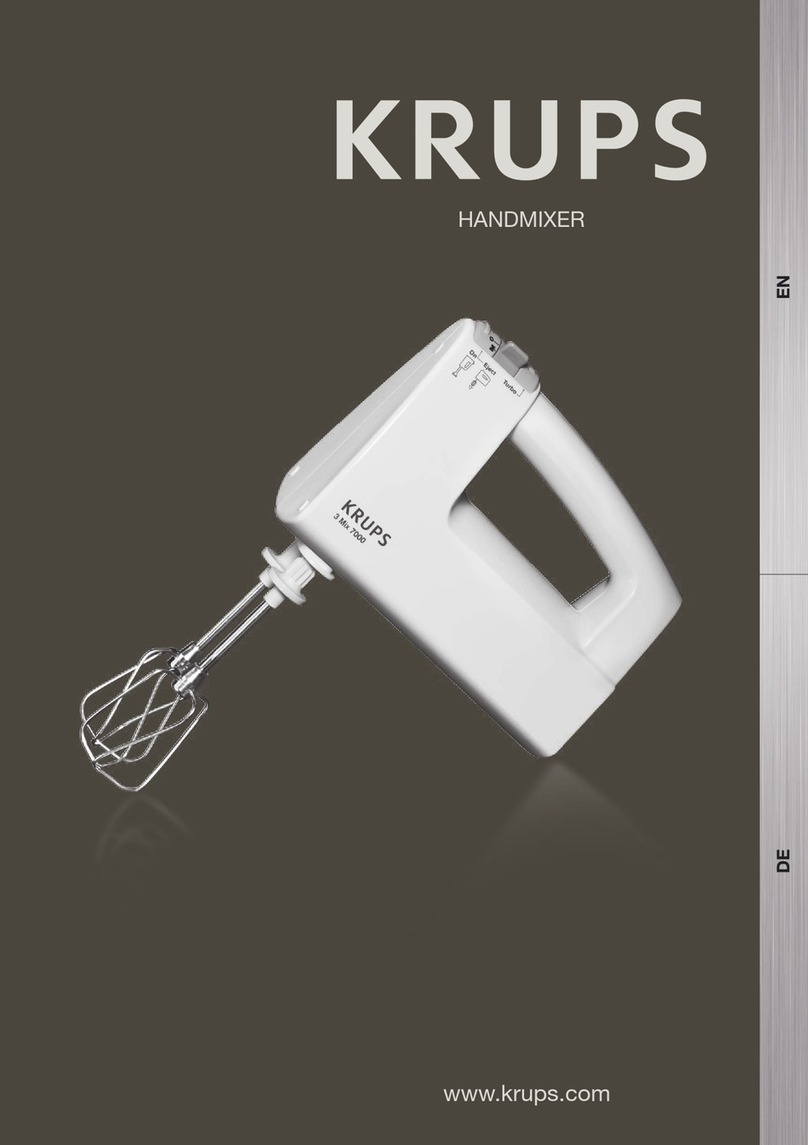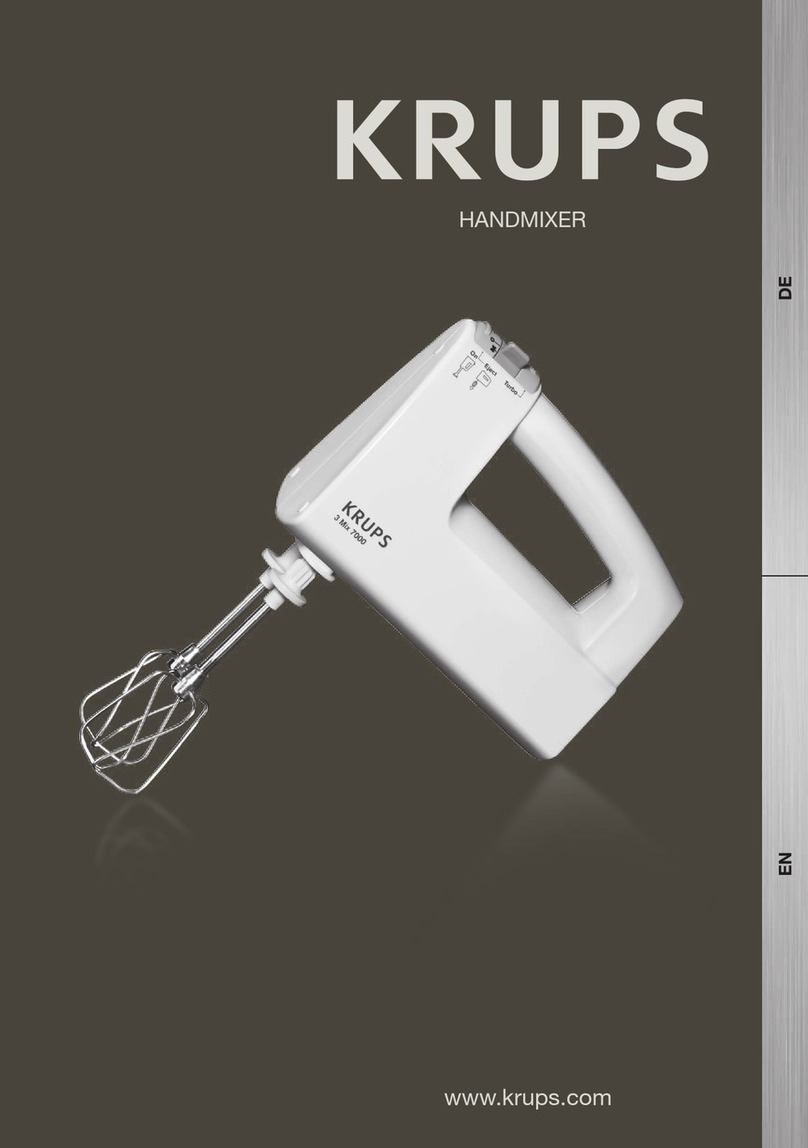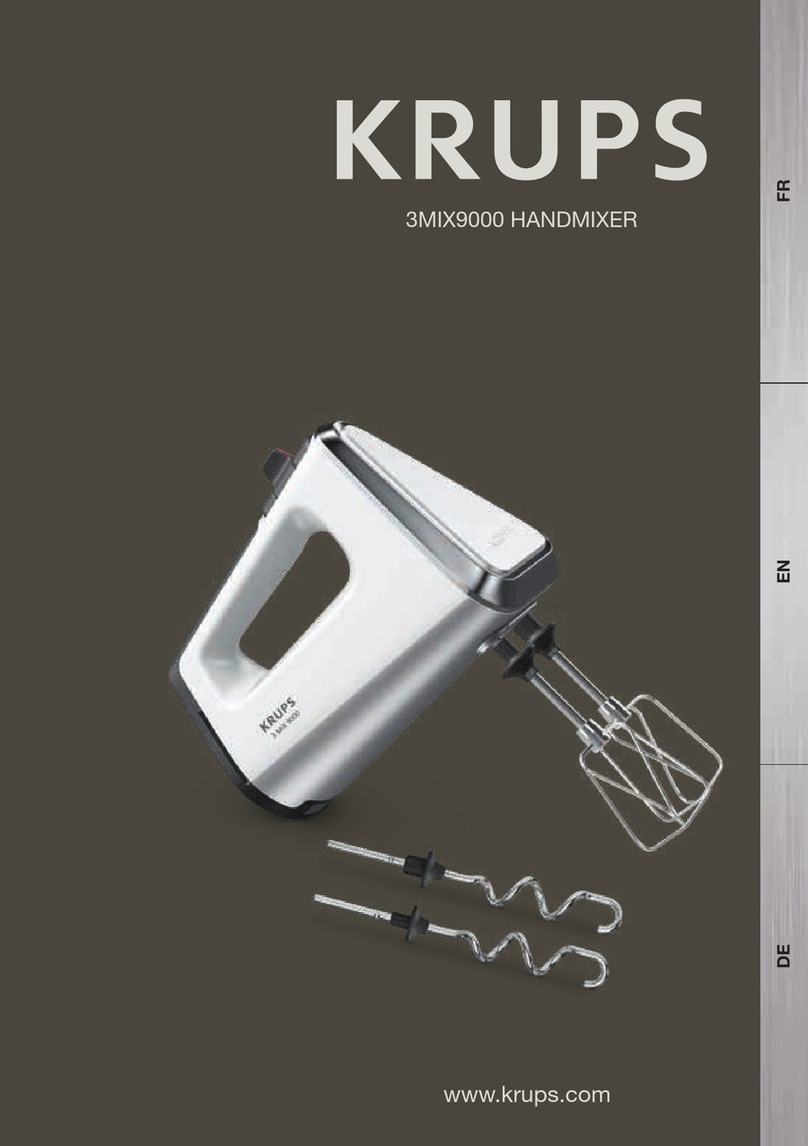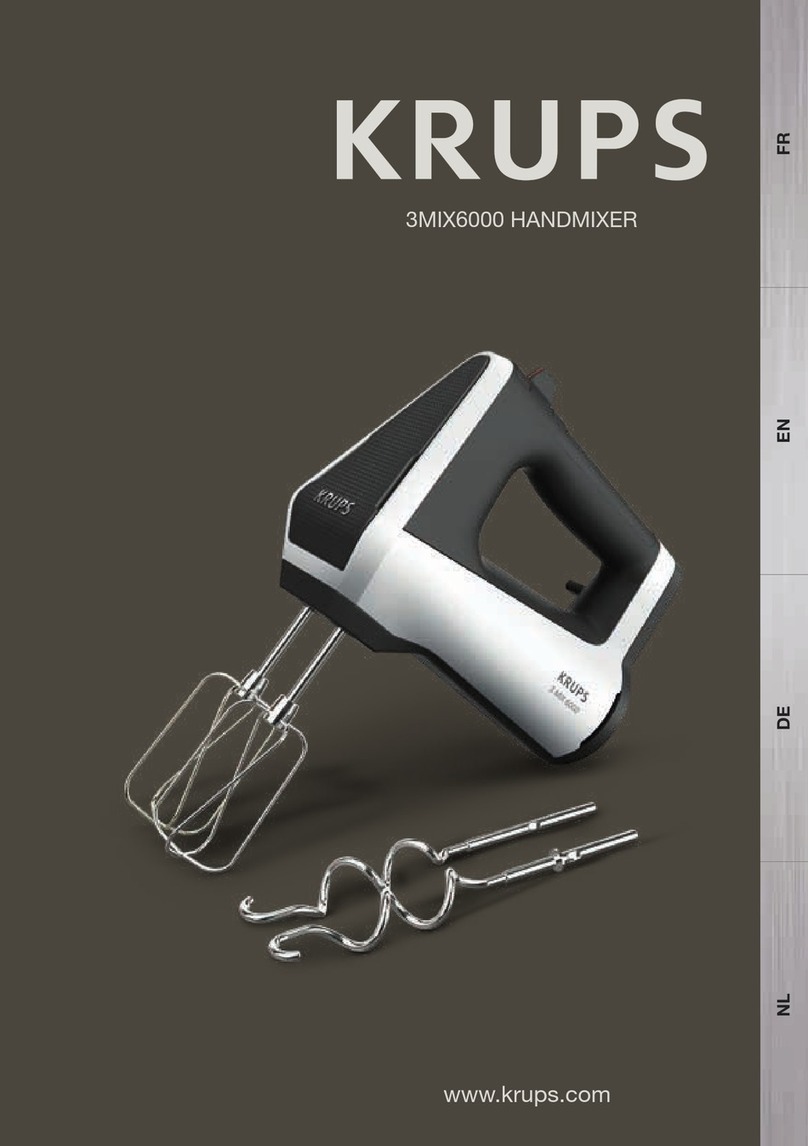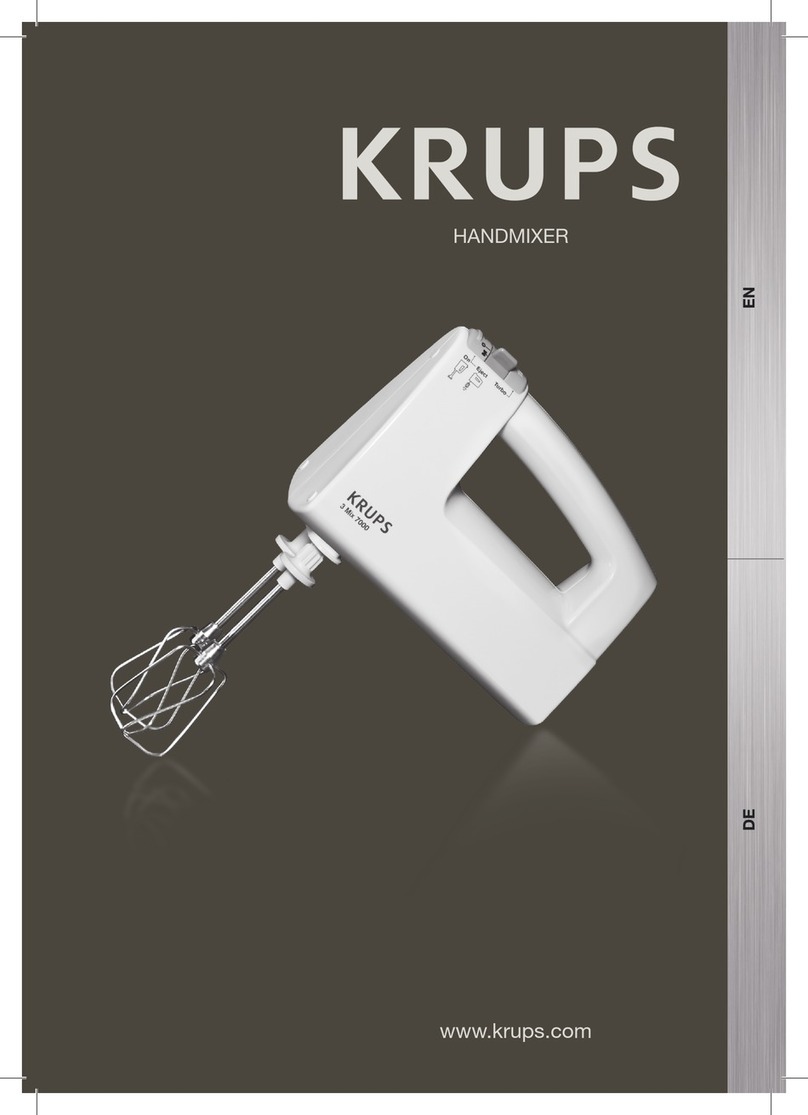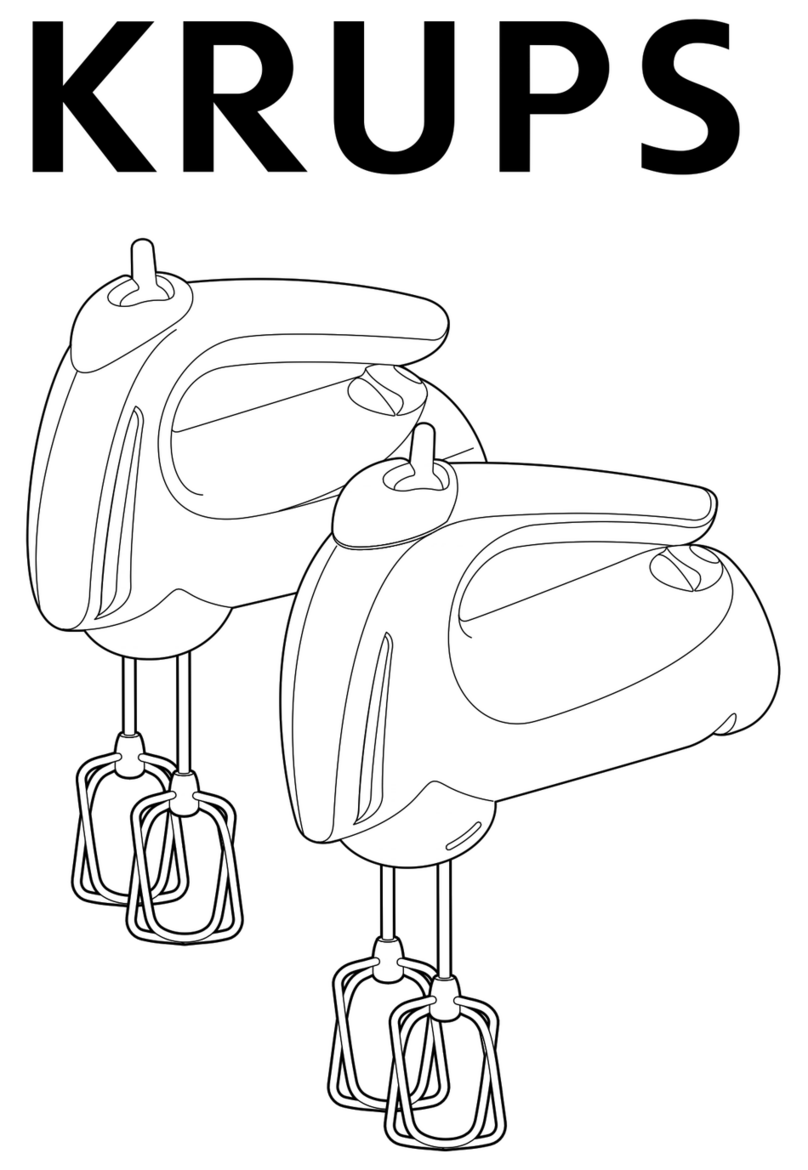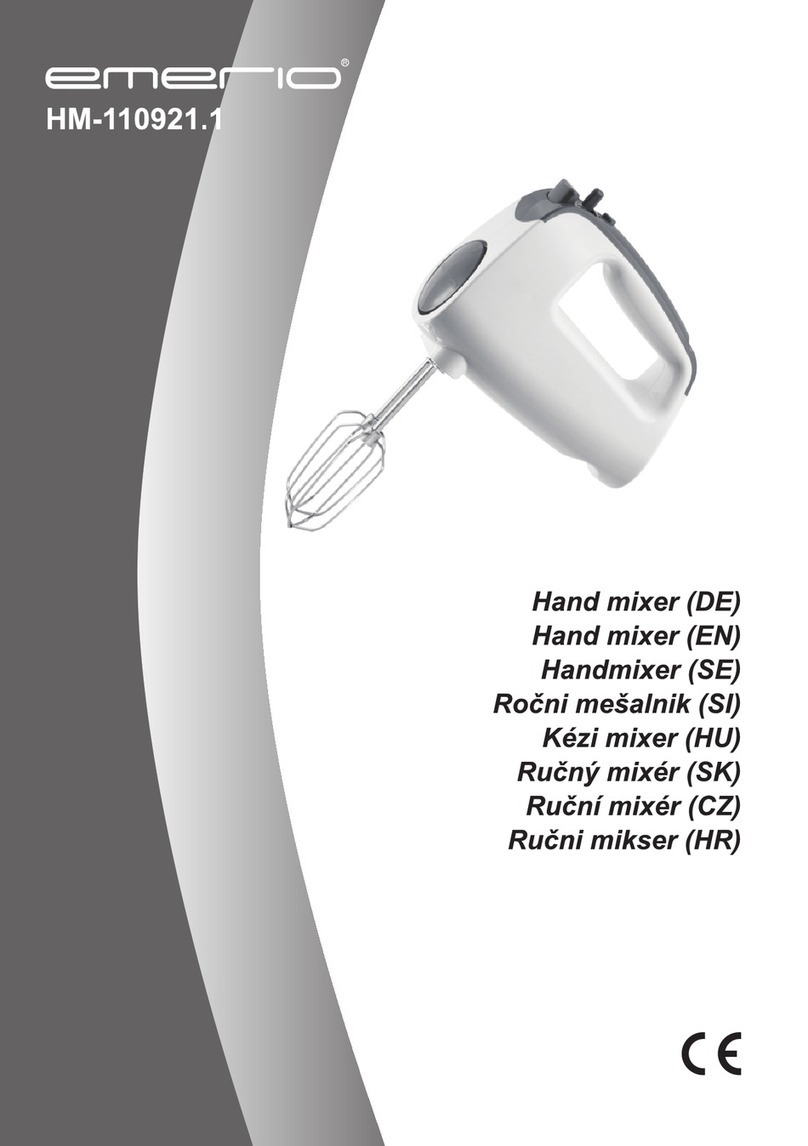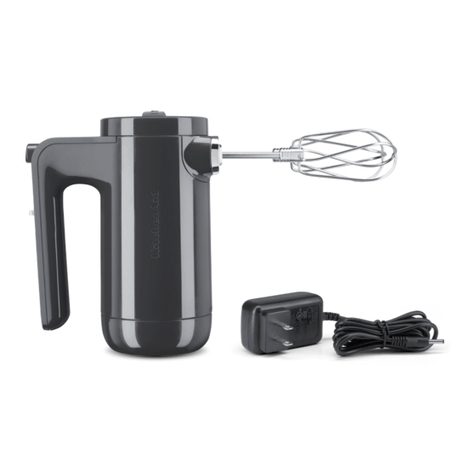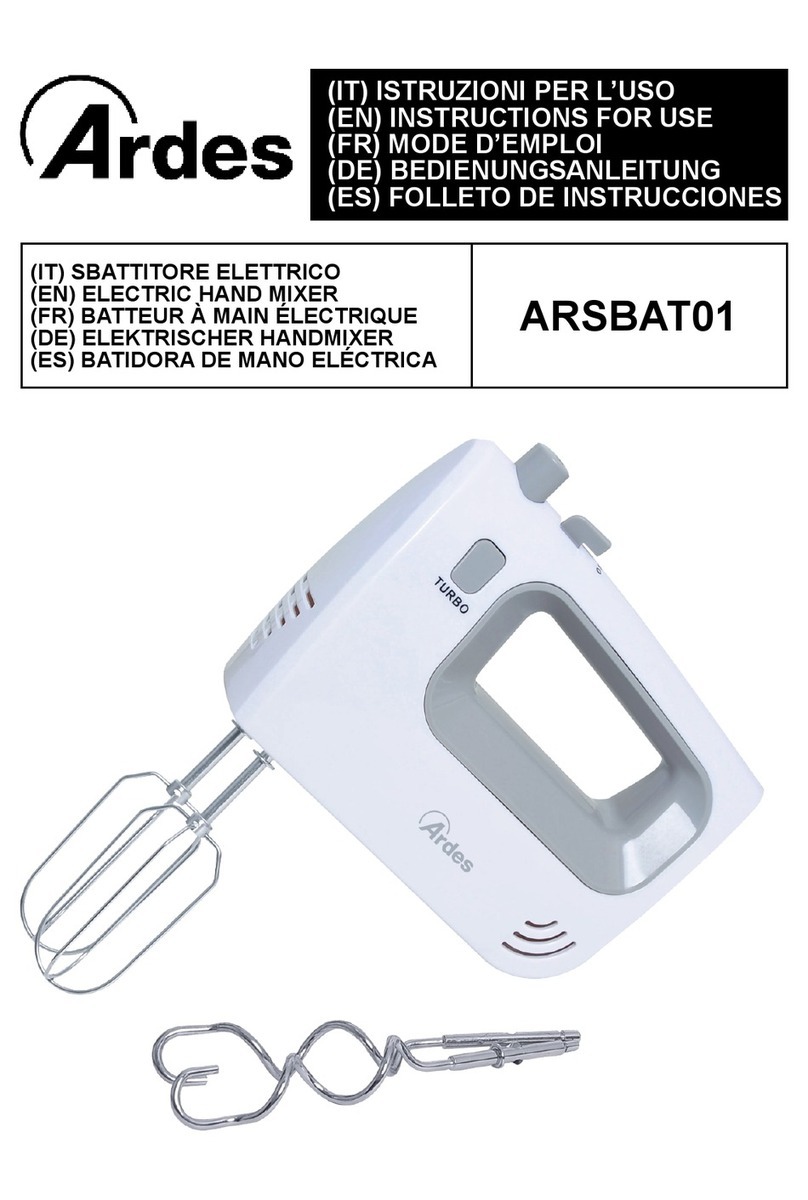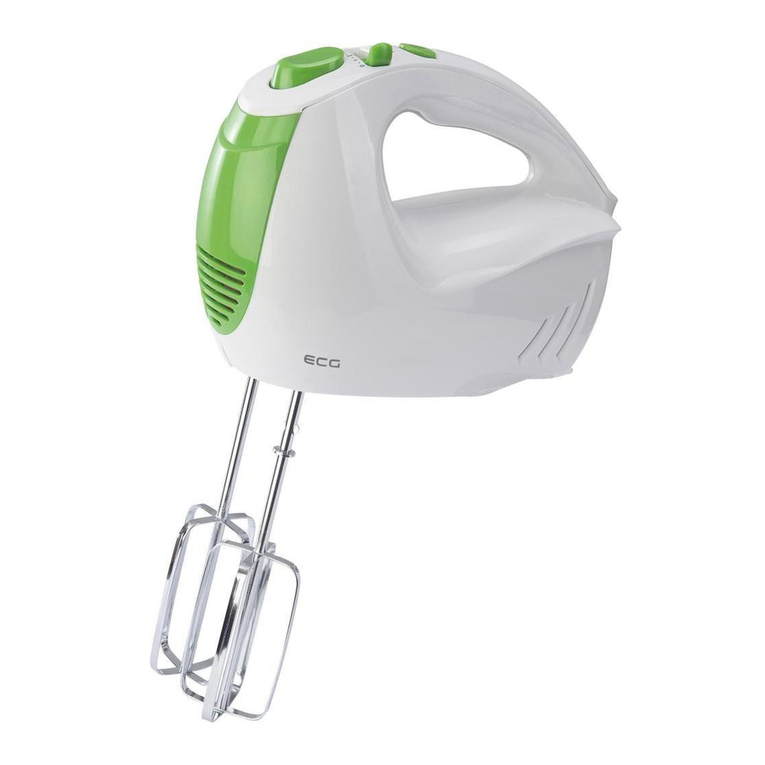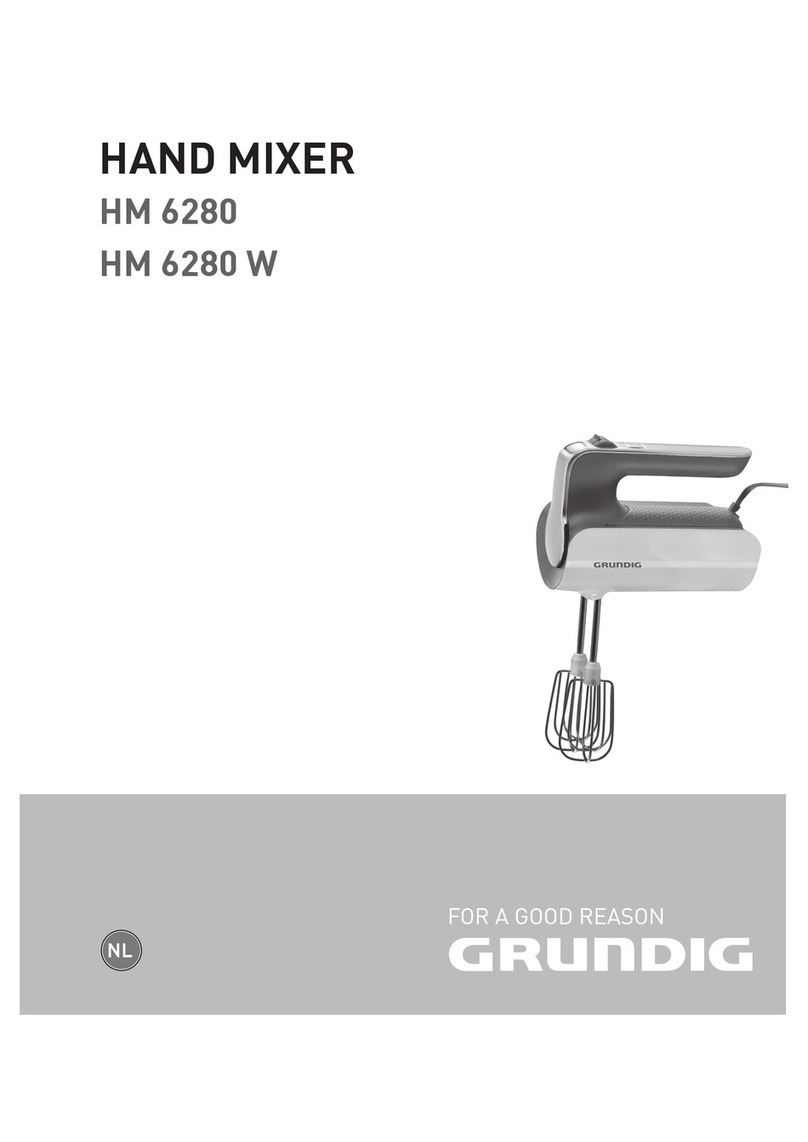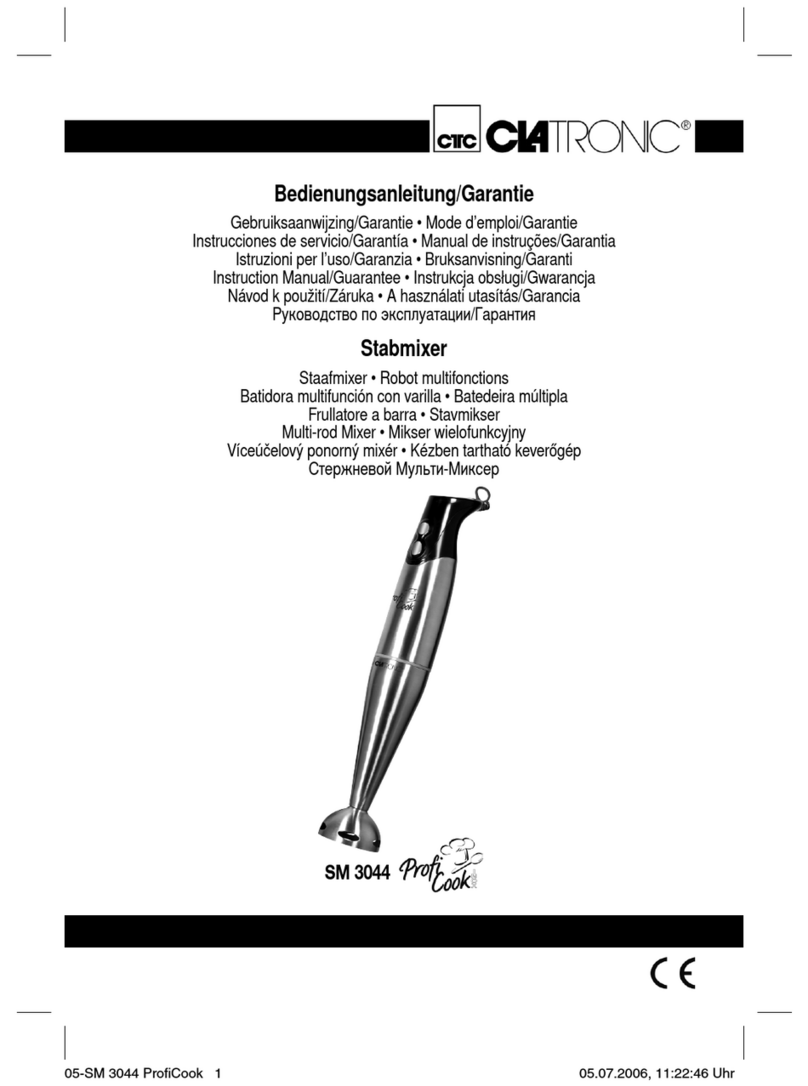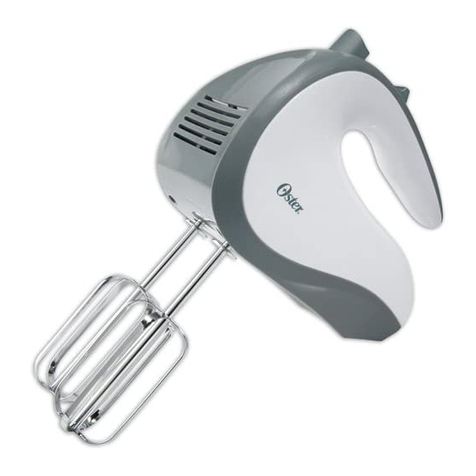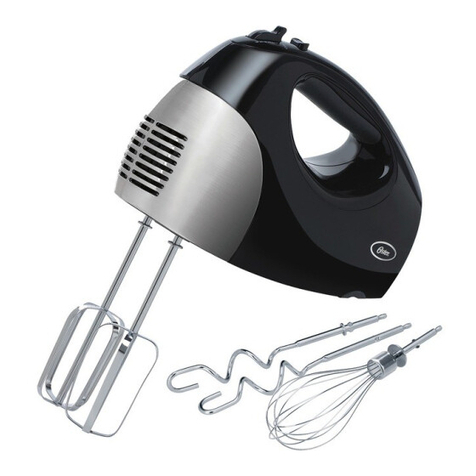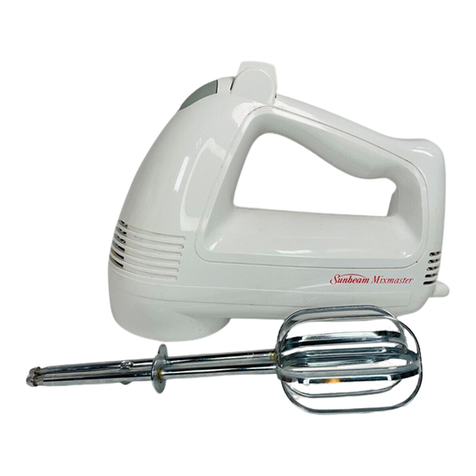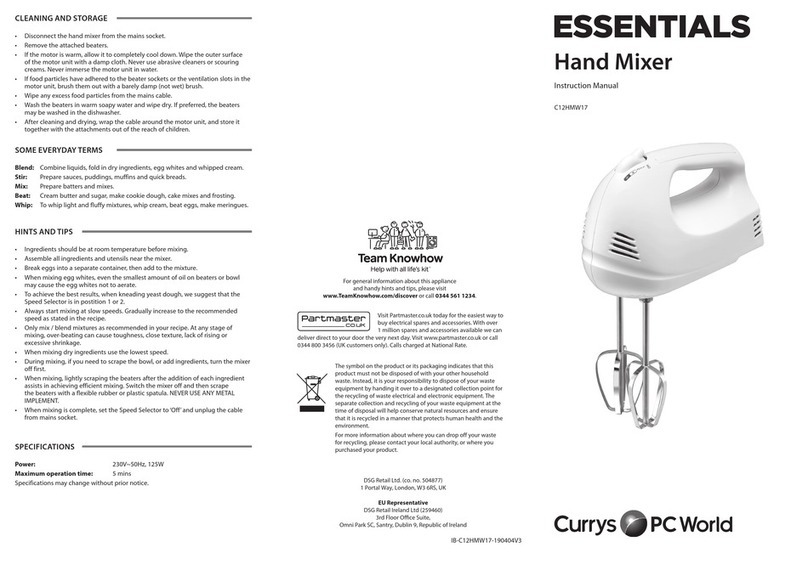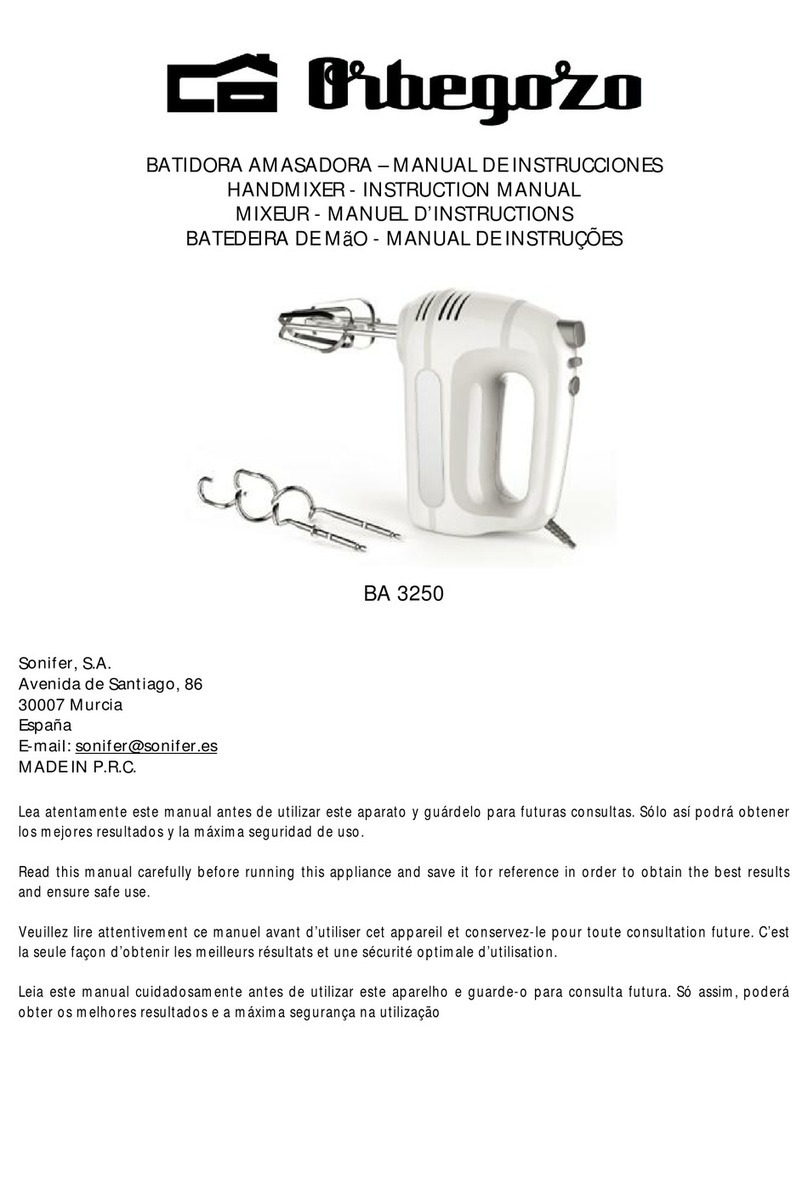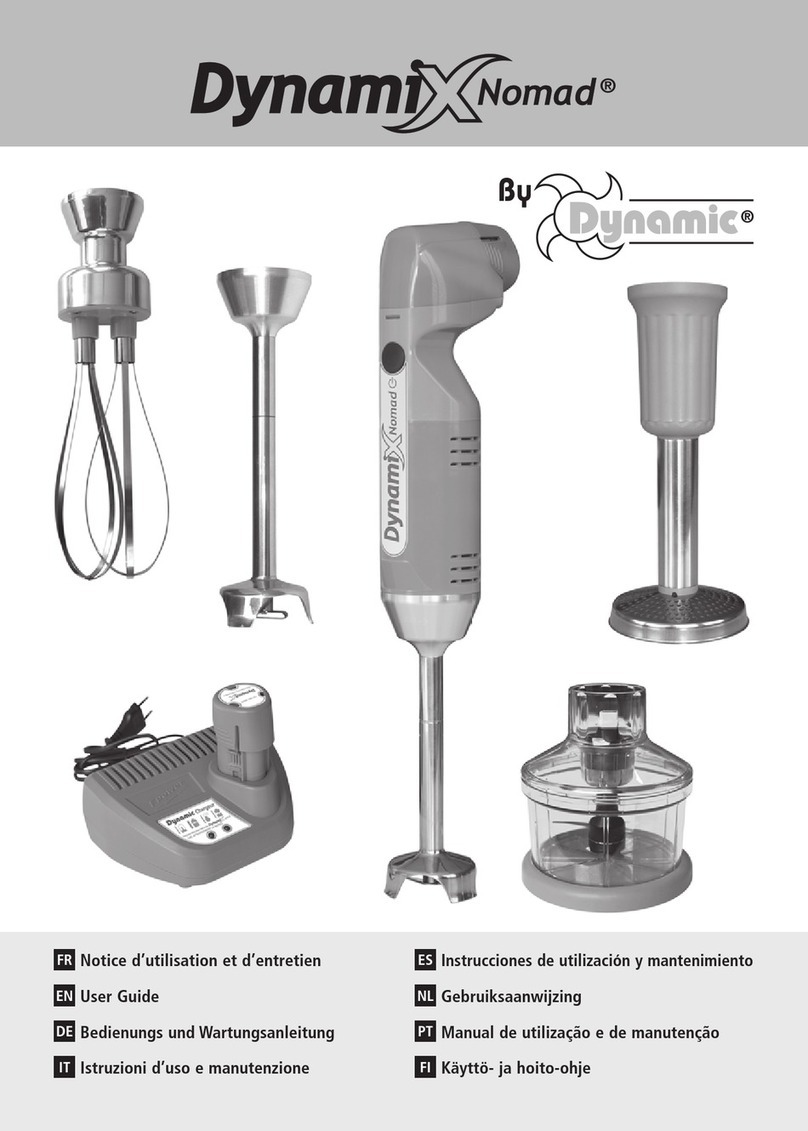
9
FR
Tambour c8 : trancher : pommes de terre, betteraves rouges, carottes, concombres, choux / Tambour c9 : râper
épais : pommes de terre, betteraves rouges, carottes, fromage / Tambour c10 : râper fin : fromage, carottes /
Tambour c11 : réduire en poudre : aliments secs (amandes, noix, noisettes, parmesan); réduire en filament : pommes
de terre / Tambour c12 : piler : glace.
Clipsez l’adaptateur (c1) sur le porte tambours (c2) et insérez le tambour choisi dans le réceptacle à tambours en le
tournant légèrement pour qu’il se place correctement dans son logement. Positionnez ensuite la bague de blocage
des tambours (c4) (fig. 17).
Insérez le pied dans les glissières situées de part et d’autre de l’adapteur (c1) puis du porte tambours (c2) (fig. 18).
Ne pas clipser le pied (c5) par le dessous (fig. 19).
Positionnez votre batteur à la verticale puis engagez l’adaptateur (c1) dans les orifices prévus à cet effet en le tournant
légèrement jusqu’au blocage complet (fig. 20).
Placez le récipient 2.5 l sous le coupe-légumes pour recueillir les aliments (fig. 21).
Branchez l’appareil.
3.2 U
Mettez les aliments dans la cheminée en les guidant à l’aide du poussoir (c3) (fig. 21).
Mettez la commande sur la vitesse maximale.
3.3 D
Débranchez l’appareil.
Pour démonter le porte tambours (c2), appuyez sur le bouton (c6) situé à l’avant de l’adaptateur et retirez la cheminée
(fig. 22).
Appuyez sur le bouton (c7) à l’arrière pour enlever l’adaptateur (c1) du batteur (fig. 23).
Retirez le pied (c5) en le faisant glisser dans les glissières situées de part et d’autre de l’adaptateur (c1) puis du porte
tambours (c2).
3.4 N
Le porte tambours (c2), les tambours (c8 c9 c10 c11 c12), la bague de blocage des tambours (c4) et le poussoir (c3)
peuvent être lavés au lave vaisselle.
Le batteur et l’adaptateur doivent être lavés avec un chiffon humide.
Remarques :
- Utilisez toujours un poussoir pour guider les aliments dans la cheminée, jamais les doigts, ni fourchette, ni
cuillère, ni couteau ou tout autre objet.
- Lors du rangement de votre coupe-légumes, vous pouvez faire glisser le pied au dessus de la cheminée (fig. 24).
4 - ACCESSOIRE PIED MIXEUR : mixer, émulsionner (selon modèle)
4.1 M
Pour insérer le pied mixeur (d1), ouvrir la trappe arrière (a5) (fig. 8).
Insérez le pied mixeur et visser fermement (fig. 25).
Branchez l’appareil.
4.2 U
Selon le type de préparation, placez les ingrédients dans le récipient fourni (bol 1l (e) ou 2.5 l (f) selon modèle) ou
dans un récipient approprié (bol ou gobelet de préférence haut).
Lorsque vous mixez directement dans un récipient, retirez le récipient de cuisson de la source de chaleur pour mixer
les préparations chaudes.
La préparation doit couvrir au minimum le bas du pied mixeur pour garantir l’efficacité du mixage.
Le récipient doit être rempli au maximum aux deux tiers pour éviter tout débordement.
Pour mettre en marche, appuyez sur le bouton éjection des fouets (a4) (fig. 27).
Relâcher le bouton (a4) avant de sortir le pied mixeur (d1) de la préparation, vous éviterez ainsi les éclaboussures.
Conseils pratiques :
- Ne faites jamais fonctionner le pied mixeur à vide.
- Pour les préparations à base de fruits, coupez et dénoyautez les fruits préalablement.
- N’utilisez pas le pied mixeur avec des aliments durs tels que glaçons, sucre, grains de café, céréales et chocolat.
4.3 D
Débranchez l’appareil.
Dévissez le pied mixeur (fig. 28).
4.4 N
Le pied mixeur peut être lavé au lave vaisselle dans le panier inférieur, lames vers le haut (attention les lames sont
extrêmement coupantes) (fig. 29).
5 - Mini hachoir 150 ml (G) (disponible en accessoires)
5.1 M
Placez le couteau (g2) sur l’axe du bol (g1) (fig. 30).

